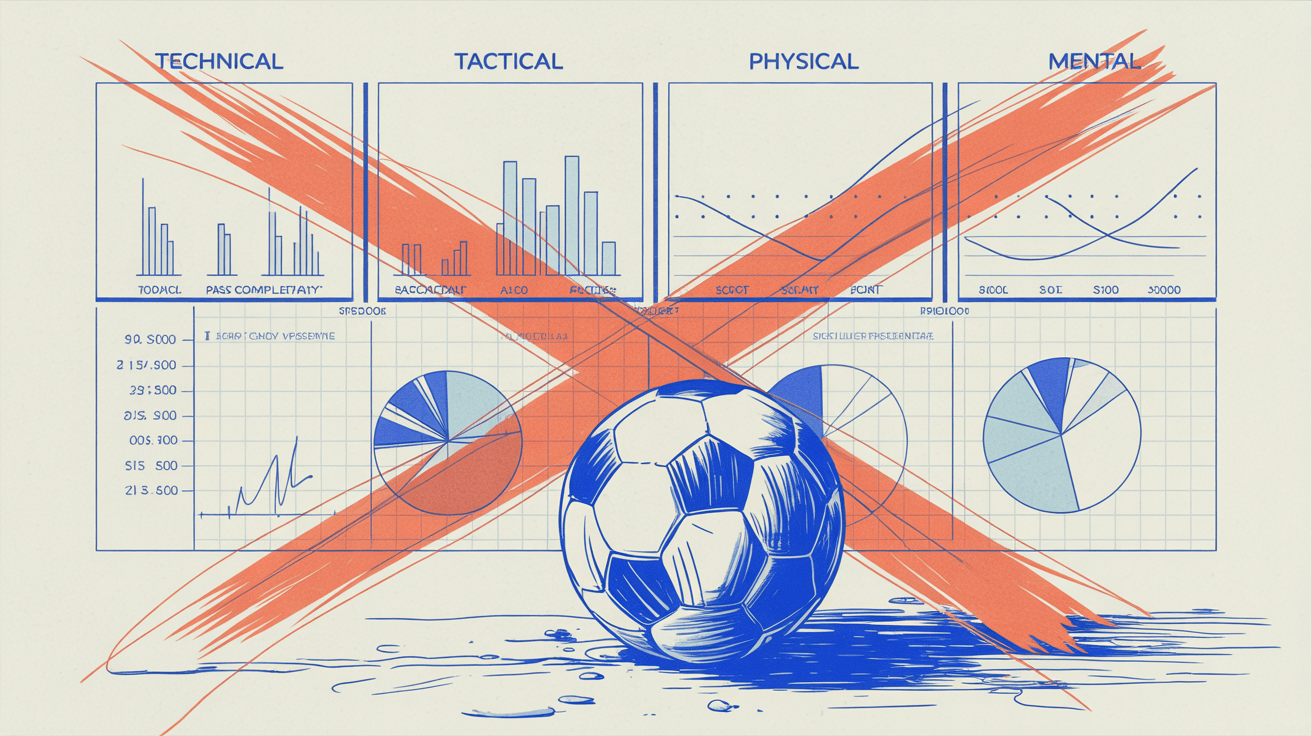Contrary to popular belief, the key to better scouting isn't just about adopting specific tools or hiring more skilled scouts; it's about recognizing and overcoming biases when assessing player qualities.
As humans, we naturally have biases. While they can provide shortcuts to understanding the world, biases can also lead to errors in decision-making. Actively acknowledging and overcoming biases improves the accuracy of player selection, increasing the chances of making better recruiting decisions.
Common biases in player recruitment
We’ve identified ten specific biases that frequently emerge within scouting teams. Each bias represents a specific cognitive tendency or pattern of thinking that can lead to errors in judgment or decision-making.
Actively acknowledging and overcoming biases improves the accuracy of player selection, increasing the chances of making better recruiting decisions.
#1: Confirmation Bias
The tendency to favor information confirming existing preconceptions.
Example: if a scout once said a player is very suitable for a club, they tend to oversee evidence that proves them wrong.
#2: Anchoring Bias
Relying too heavily on the first piece of information received.
Example: a scout heard from a colleague that a player is followed by a bigger club, so when the scout evaluates the player, they tend to overrate him.
#3: Recency Bias
Giving more weight to recent performances.
Example: a scout overestimates the importance of the last performance evaluation of a player and underestimates the importance of previous ones.
#4: Halo Effect
Generalizing a player’s positive traits across all aspects.
Example: if a player showcases exceptional set piece delivery, there might be an assumption that they are also very good at delivering crosses in open play, without seeing evidence for it when evaluating him.
#5: Similarity Bias
Preferring players who resemble previous successful ones.
Example: a club may favor a new striker mainly because their style or appearance mirrors a previously successful striker, even though there are definite differences that could turn out less positively.
#6: Overconfidence Bias
Overestimating one’s ability to predict a player’s future success.
Example: a scout or decision maker proclaims a player would become a success at their club, disregarding the unpredictable nature of player fit and development.
#7: Optimism Bias
Being overly optimistic about a player’s potential, ignoring warning signs.
Example: a club might ignore a player’s consistent poor form, hoping that their past success will resurface without addressing underlying issues.
#8: Selection bias
The absence of a representative sample to conclude on.
Example: a scout is positive about a player based on watching three matches, even though they were all played at home against weaker teams.
#9: Sample Size Bias
Underestimating variance in outcomes if an opinion is based on a small sample size.
Example: A scout only watched a player in only one match, but is convinced he is the ideal signing for the club.
#10: Contextual influence bias
Underestimating the contextual factors that influence performances or outcomes.
Example: a scout writes a negative report about a player, but doesn’t assign enough weight to contextual factors, like the bad pitch conditions, the team’s tactics, or the injury he just recovered from.
Effective remedies for overcoming biases in football scouting
To tackle these biases, football clubs can adopt the following strategies.
Luckily, there exist effective solutions for clubs to address biases.
#1: Awareness and education
Implement continuous education initiatives to enhance awareness of biases among scouting staff. Without awareness, addressing biases becomes challenging.
#2: Blind scouting process
Within an organization, individuals often tend to mirror each other’s opinions, including scouts, sometimes without realizing it. To counteract this bias, it’s beneficial not to exchange opinions about players until everyone has evaluated them independently.
We adopt a similar approach in our scout selection process. We anonymize the names of applicants to ensure an unbiased assessment of their evaluations. Ultimately, only the top 1% are invited to join our company.
#3: Diverse scouting teams
Ensure that your scouting team comprises individuals with diverse backgrounds, experiences, and perspectives. By assembling a team with varied viewpoints, both internally and externally, you can tap into a broader range of insights and considerations during player evaluations.
#4: Consult external opinions
It’s a good thing that people within an organization discuss players regularly. One downside is that, to some extent, tunnel vision can develop. By consulting an external party, with no pre-information on players, a fresh and unbiased perspective on players can either confirm or challenge the current beliefs about players.
Ready to eliminate biases?
It’s time to improve football scouting by eliminating biases head-on. It’s not just about tools or skilled scouts; it’s also about recognizing and overcoming biases in player assessments. By using the strategies outlined here, scouting will become more fair and accurate.
If your club is ready to take scouting to the next level with advanced video scouting and receive unbiased player evaluations, reach out to us for assistance.




